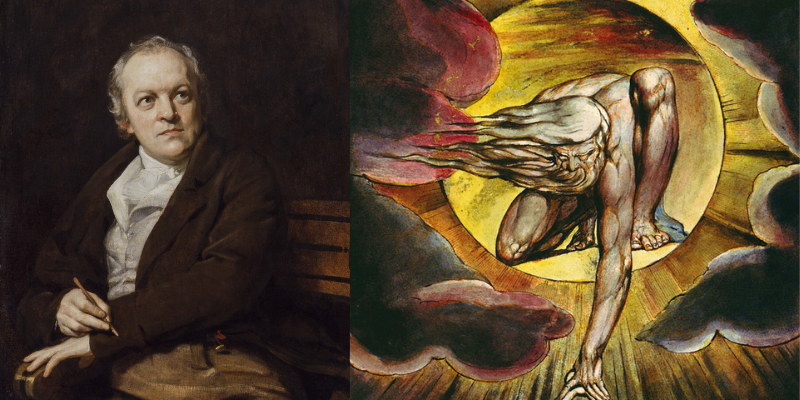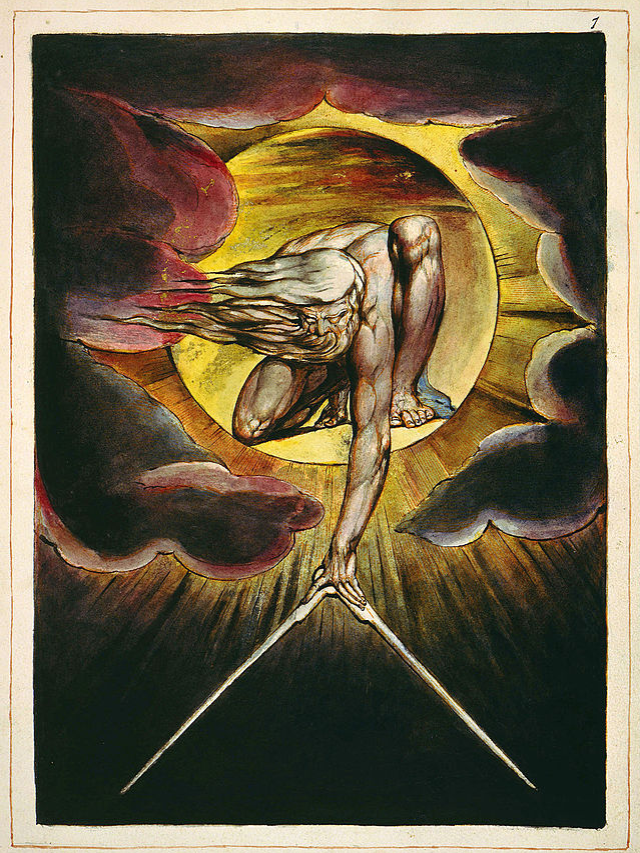Born on this day – November 28th, 1757 – William Blake, was a seminal figure in both literature and art. His life was characterised by both financial hardship and artistic talent. Recognized more as a poet posthumously, he defied the norms of his time, rejecting the formal precision of Neoclassical art and challenging the Enlightenment’s mechanization and intellectual reductivism.
Blake, who never experienced great commercial success, used prints, paintings, and poems to construct a magical world that reflected modern politics and culture and echoed Dante’s complexity. His distinctive pantheon of gods and spiritual vision fed elaborate allegorical stories about the conflicts between order and revolution, reason and imagination. Blake is distinguished by his unique manufacturing methods, such as “illuminated printing,” and his ability to seamlessly combine writing and painting. His social disobedience and extreme political and religious beliefs resulted in social exclusion as well as favouritism.
John Linnell later on proved to be an important benefactor, bringing stability to Blake’s finances. The Ancients, a group of like-minded artists, gathered at Blake’s house. Blake persisted in his abundant work despite obstacles, emulating creative enthusiasm and motivating admirers.

In 1818, Blake’s financial situation improved, and he started doing illustrations for Linnell for The Book of Job around 1820. Blake died in 1827 when he was working feverishly on the drawings for Dante’s Divine Comedy. He created a significant and enduring legacy for fans of both literature and art, even though he was forgotten at the time. Known as a polymath, he had an impact on modernism, Symbolism, Pre-Raphaelitism, and Romanticism with his distinct philosophical and religious ideas. Because of his influence on literature, music, and film, Blake’s creative legacy is a powerful force for imaginative thinking and artistic freedom.
11 Artworks by William Blake
Here are 11 extraordinary paintings by poet and printmaker William Blake:
1. Songs of Innocence

Poetry is inspired by a divine child, as symbolised by the wandering piper in William Blake’s frontispiece for Songs of Innocence. Blake created it in 1789 and spent decades hand-colouring and printing unique replicas for his customers. Inspired by the French Revolution, the poems highlight the heavenly qualities of nature, frequently from the viewpoint of a child. Blake’s late vision was made clear when Edward Calvert commissioned a duplicate of the painting in 1825. This piece of art was acquired by the Museum’s Department of Prints in 1917.
2. The Ghost of a Flea
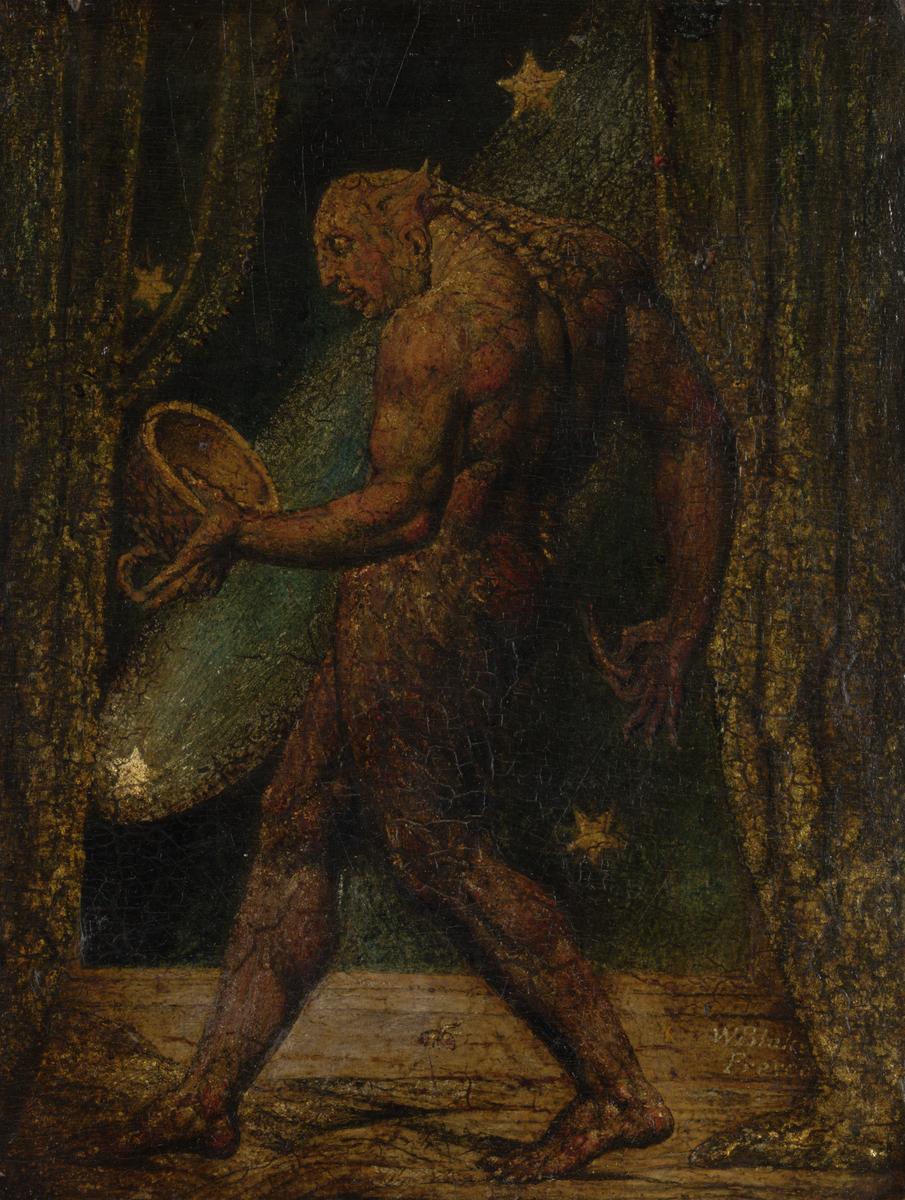
The painting, “The Ghost of a Flea” was among a series of paintings commissioned by John Varley. According to Varley, the ideation of this particular painting came to Blake during a séance wherein he saw an apparition of a Flea. In the painting, this monstrous form of a flea from the perspective of William Blake is shown devouring a bowl of blood.
3. Newton
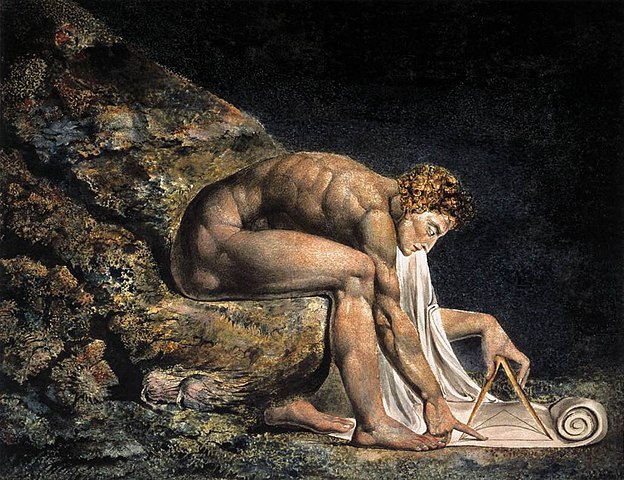
William Blake draws the 17th-century mathematician Isaac Newton in a satirical picture by depicting him as a burly young man submerged in water, engrossed in calculations on a coral-covered rock. Blake implies that Newton’s focus on computations causes him to become blind to the colourful world and that his scientific method is overly reductionist. This piece of art is a large-scale experimental colour print by Blake that combines painting, drawing, and printing.
4. Songs of Experience: London
William Blake’s Songs of Experience, etched in 1794, expanded upon his earlier Songs of Innocence. Over decades, the artist printed and hand-coloured duplicates, each with a unique visual identity. Experience’s sombre tone stands in stark contrast to Innocence’s, depicting senseless cruelty to infants during the chaos of the French Revolution. After first meeting Blake in 1825, Edward Calvert commissioned a beautifully painted copy of Songs, which the Museum eventually acquired in 1917.
5. The Parable of the Wise and Foolish Virgins
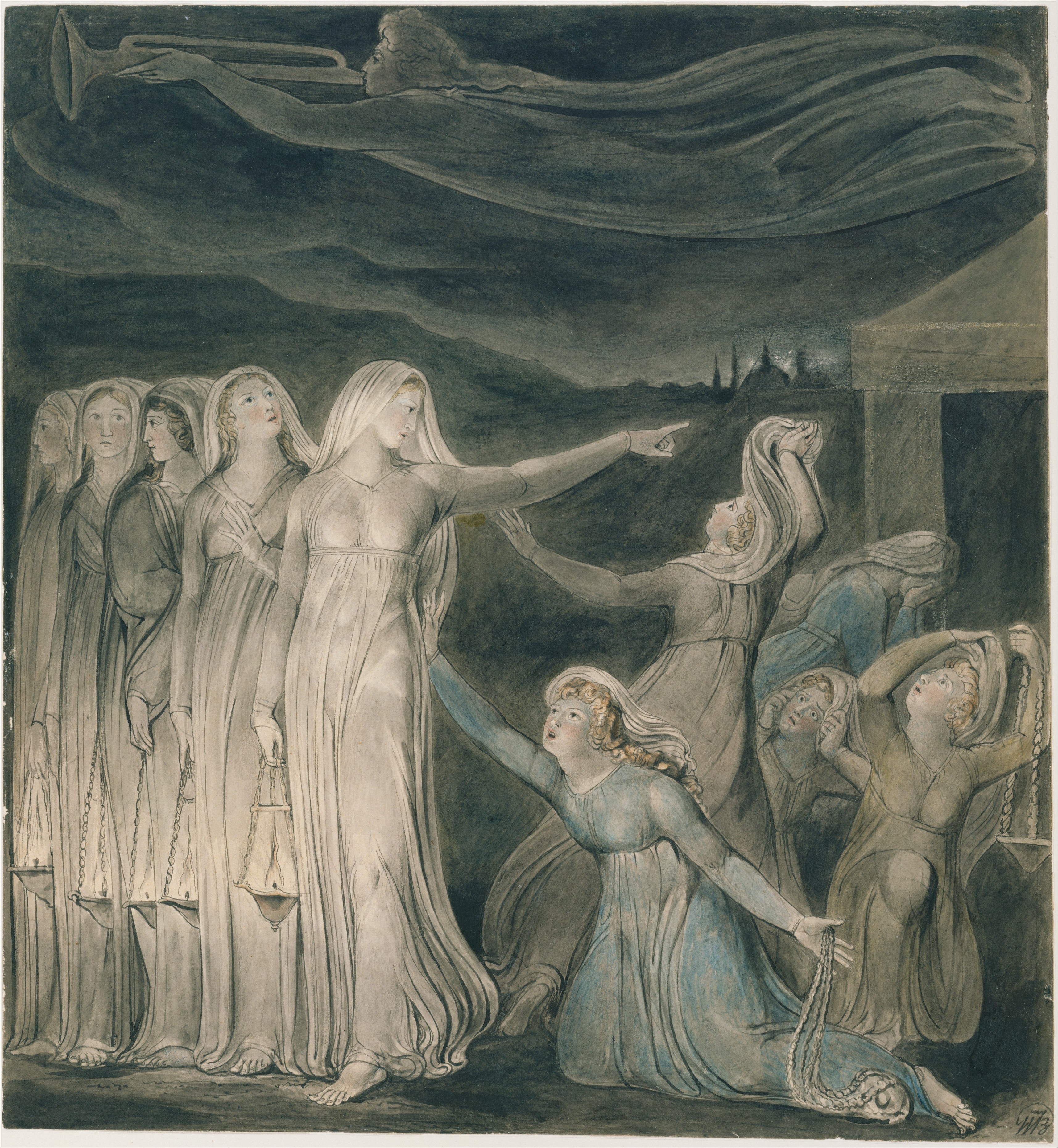
This watercolour was originally credited to William Blake and shows a scene from Matthew XXV, 1–9. It was later identified as a replica of a piece created for Sir Thomas Lawrence in 1825; the piece was one of several that Lawrence had commissioned. Blake painted several renditions of “The Parable of the Wise and Foolish Virgins,” with several copies housed in public and private collections, including the Fitzwilliam Museum and the Metropolitan Museum of Art.
6. Songs of Experience: A Poison Tree
Another artwork from the Songs of Experience series is the infamous poem Poison Tree by William Blake. The poem talks about the feeling of rage, anger and spite with an allegory to a poisoned apple tree.
7. The Night of Enitharmon’s Joy
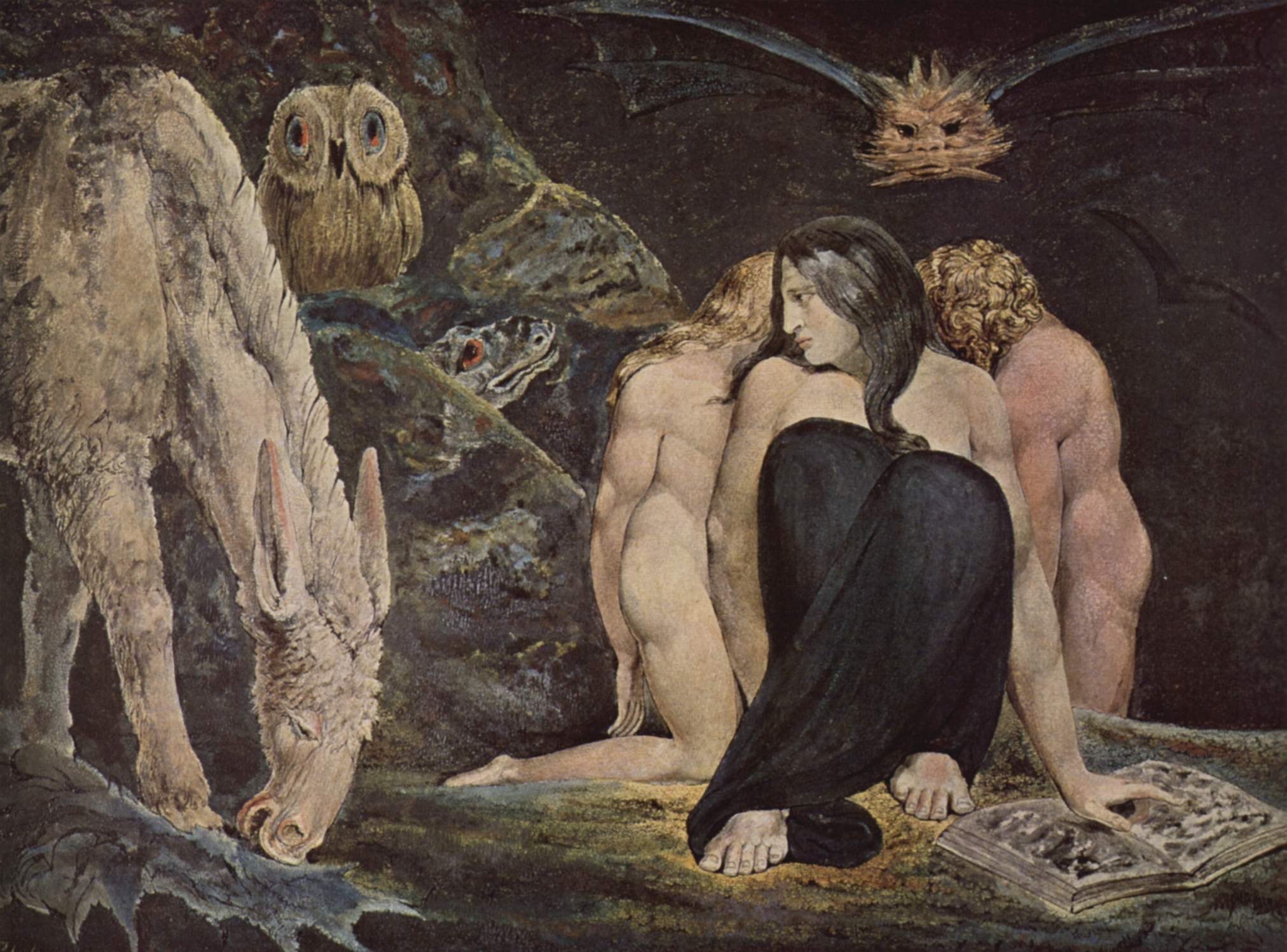
The deep and dense colour printing in the sky and rocks of this William Blake print suggests that it was the first of three impressions. Blake’s mythological figure Enitharmon is shown in the scene exhibiting her fake religion during her “night of joy.” Blake details the figures, the bat, and the donkey with bold pen and ink outlines. The figures are given form by transparent yet intense colour washes, and the owl’s eyes are emphasised with an opaque, vivid red wash.
8. Oberon, Titania and Puck with Fairies Dancing
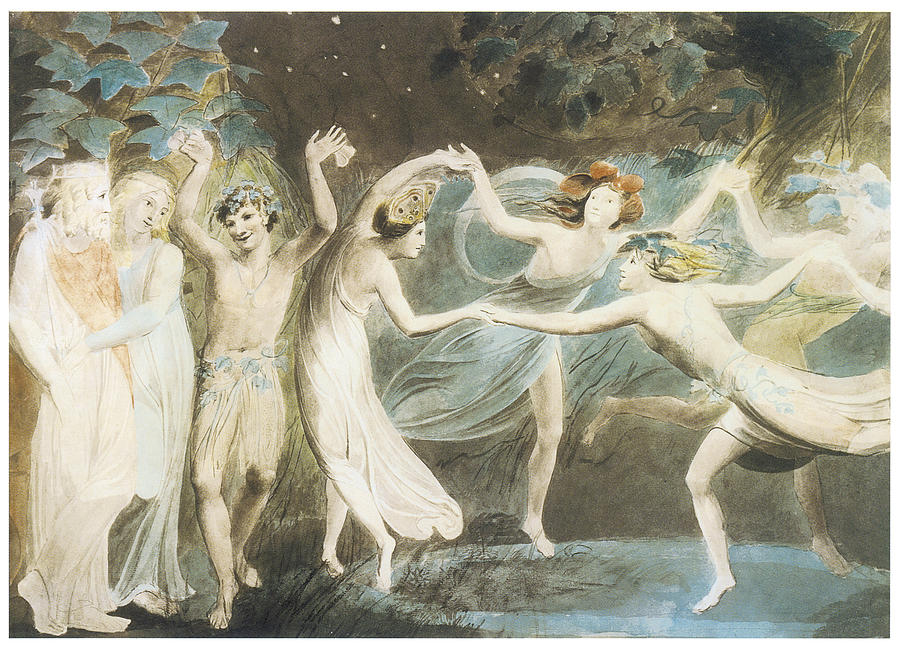
At the end of “A Midsummer Night’s Dream,” fairies dance and Oberon and Titania make up. Wearing gauzy skirts and petals, William Blake’s fairies are shown as being weightless on tiptoes. Their diminutive size contrasts with their human-like appearance, and the enchanted atmosphere, heightened by fireflies, shaped modern perceptions of fairies and their features, which dance like rings.
9. The Red Dragon and the Woman Clothed with the Sun
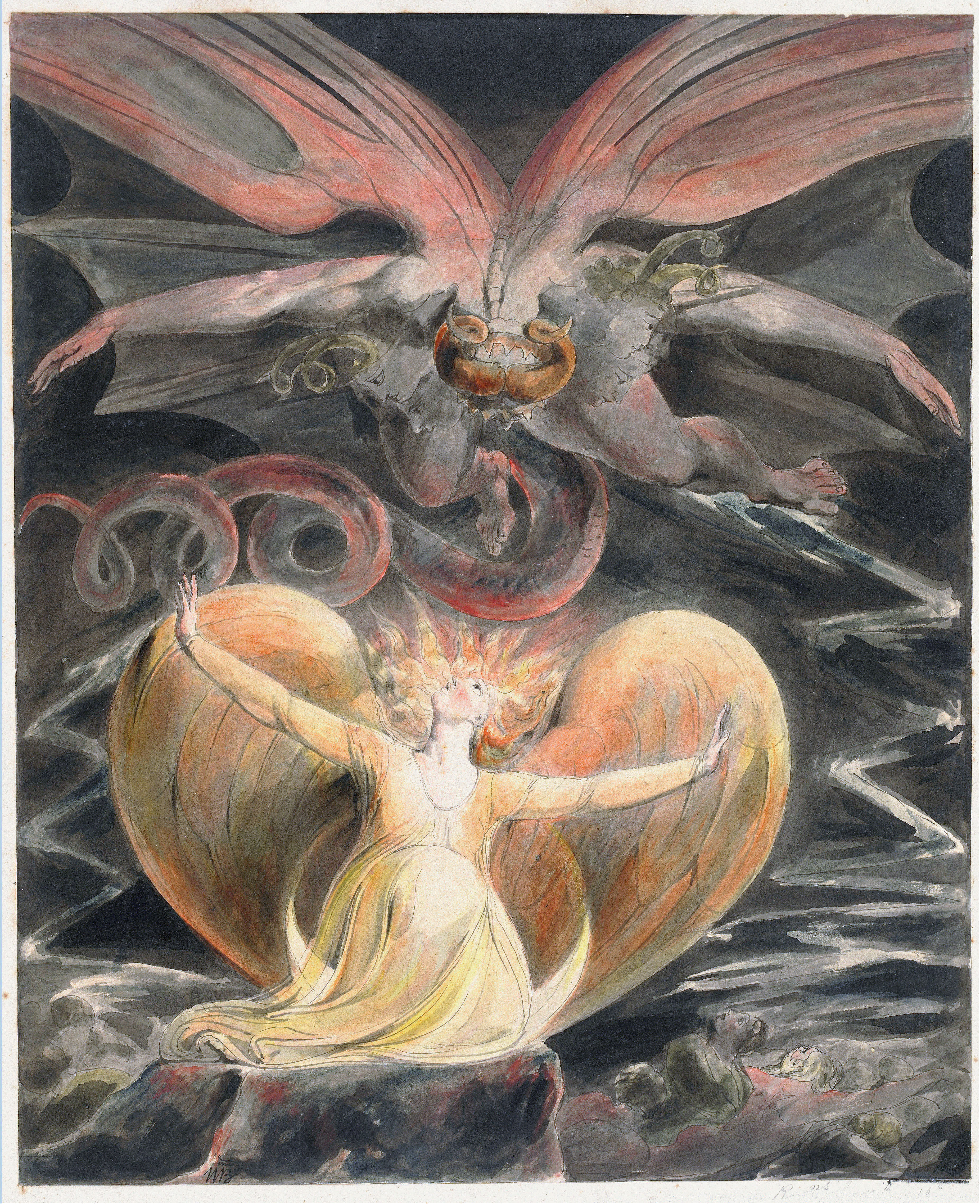
William Blake illustrated portions from the Book of Revelation with a watercolour that shows a cosmic struggle between good and evil. In the dramatic scene, a woman representing spiritual purity is attacked by a red dragon, representing Satan. The conflict between light and dark in the artwork alludes to the duality of good and evil. Blake’s series, which was produced between 1805 and 1809 for his patron Thomas Butts, emphasises the triumph of spiritual force over difficult conditions.
10. Angel of the Revelation
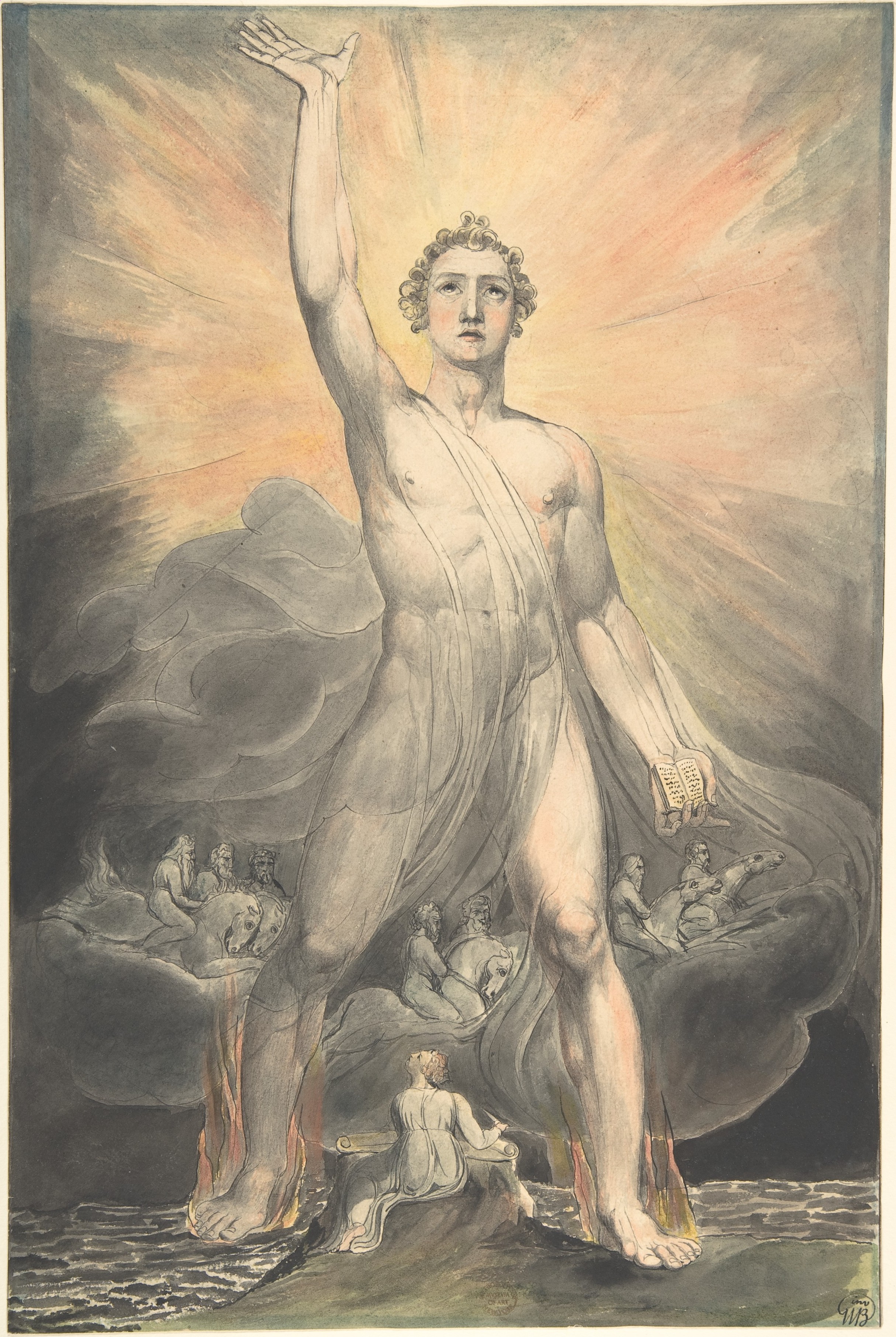
Blake’s Angel of the Revelation, which is based on the Book of Revelation, features a massive angel that rules the scene and has a transcendent, dazzling appearance. Although Blake personifies “seven thunders” as ghostly riders and turns a rainbow into an eruption of light, there are literal readings of details such as burning pillars for legs. Blake, who criticises Enlightenment reason, contrasts his portrayal of the scientist Isaac Newton with the angel’s heroic vision.
11. The House of Death
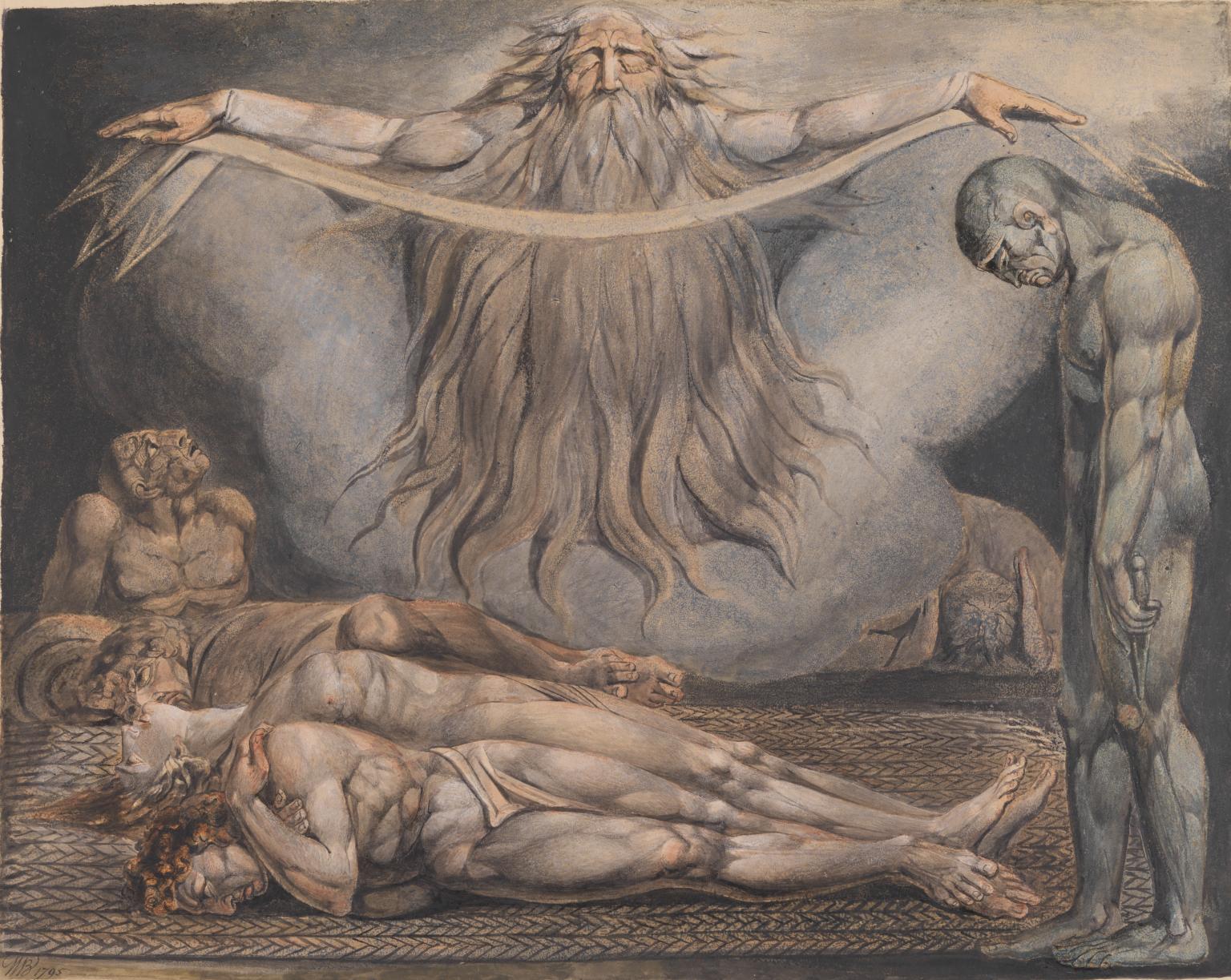
William Blake, who considered John Milton to be the best poet in England, created enormous colour prints that featured passages from Milton’s “Paradise Lost.” In Book XI, Archangel Michael shows Adam the consequences of eating the Forbidden Fruit. This poster depicts a vision of men afflicted with terrible ailments in ‘Death’s Gloomy Cave.’
References:
- The Art Story
- The Metropolitan Museum of Arts
- Tate Britain
- NGA.gov
- Learner.org
Read Also:
Swiss or Remiss!: 8 Swiss Watch Brands Who Dominate the World

